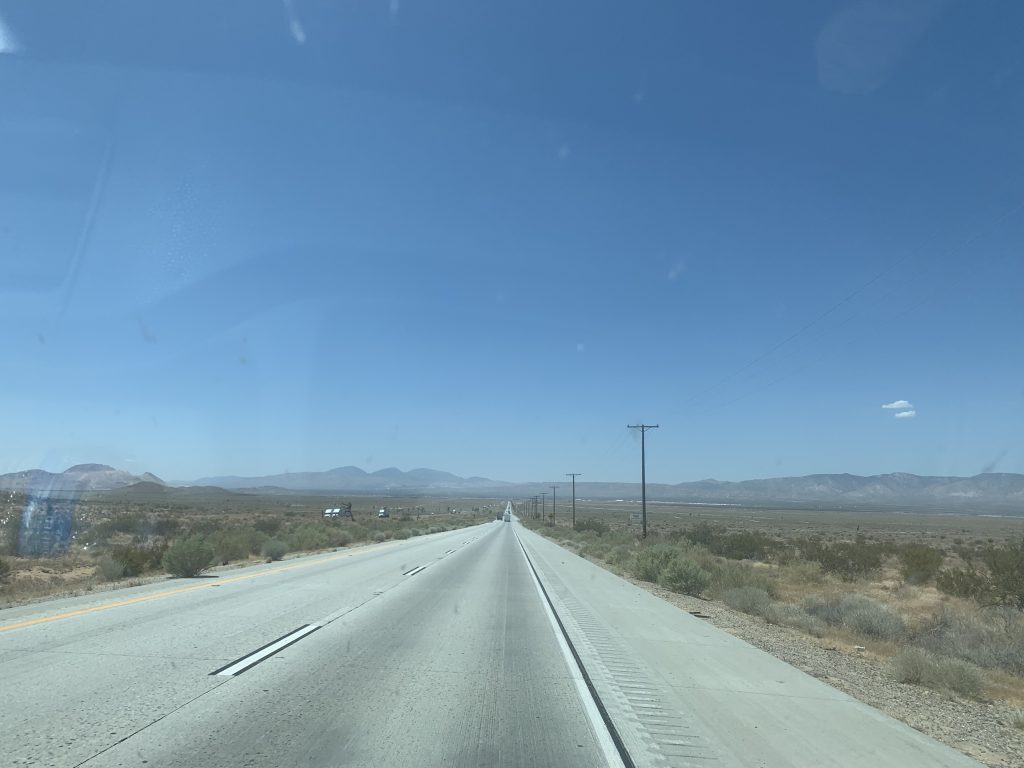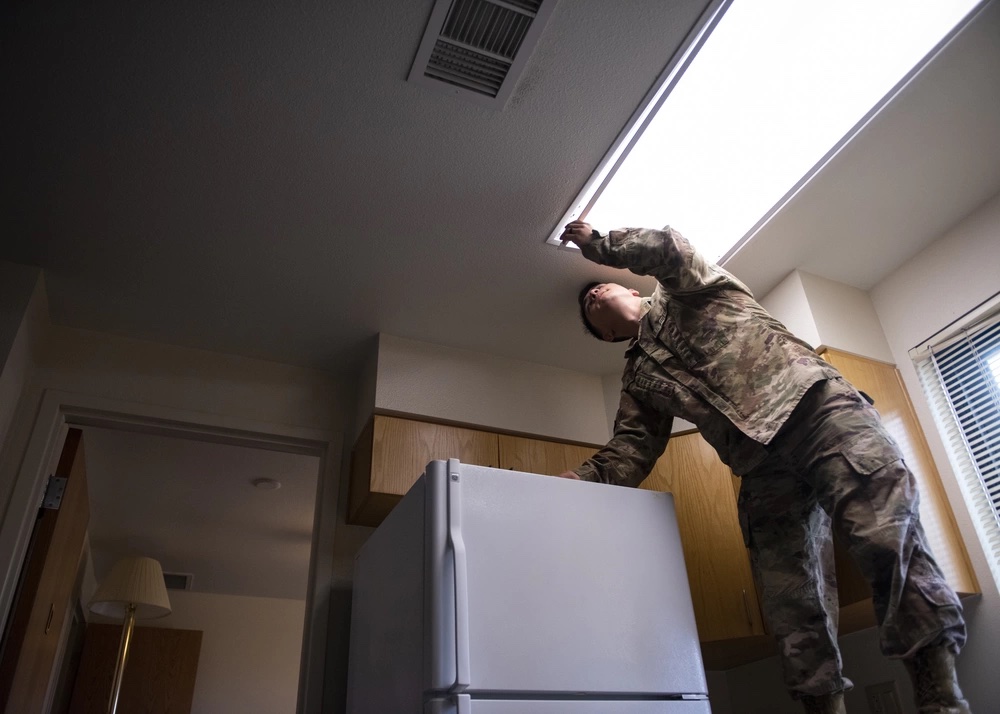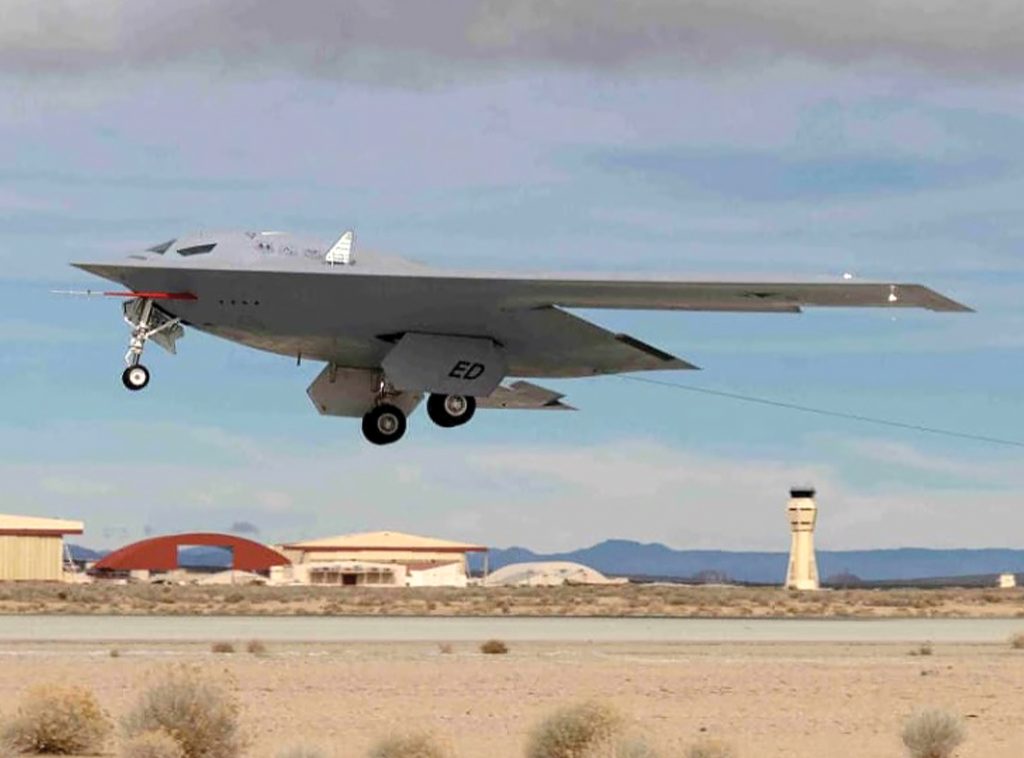On Sept. 10, Edwards Air Force Base, Calif., held a ground-breaking ceremony for the Air Force’s first-ever privatized apartment complex. While the actual construction and completion date is still to be determined, the ceremony marked the project’s approval by the U.S. Office of Management and Budget, and the forthcoming complex marks a brave new world for how the Air Force contracts with private housing providers.
The need is urgent: the military construction budget process is moving too slowly to stem a nationwide affordable housing shortage felt even more acutely at remote military bases such as Edwards, which is short accommodations for 307 unaccompanied service members.
“Just about everyone has more demand than they have availability. We’re no different,” Col. Joel Purcell, commander of the 412th Civil Engineer Group at Edwards, told Air & Space Forces Magazine. “But we hope that we’re going to be able to take care of some of the 307 unaccompanied member shortage with the apartments.”
Planners hope to complete the project by summer 2026, though the official goal date is still being worked out. Once complete, the apartment complex at Edwards will feature 246 total beds split among 142 apartments. Of those apartments, 38 will be one-bedroom, one-bath, while 104 will be two-bedroom, two-bath.
Dr. Ravi Chaudhary, assistant secretary of the Air Force for energy, installations, and environment, said at the ceremony that the complex will include six to eight separate, three-story buildings. He also said the amenities at the complex will include a park with a barbecue area, a fitness center, a pool, electric vehicle charging stations, and more.
The target demographic is service members who are no longer eligible for on-base government-owned dormitories—inhabited mostly by very junior service members fresh out of training—but who are not quite ready for the tight off-base housing market.
For example, a tenant of a one-bedroom unit might be an unaccompanied company grade officer like a student at Edwards’ test pilot school. Meanwhile, two post-dormitory enlisted Airmen should be able to afford a two-bedroom unit if they pool their basic allowance for housing (BAH), an allowance the military provides to offset the cost of non government-provided housing.
The exact rent cost for those units is still being worked out, but Purcell emphasized that Edwards is doing everything it can to keep it within a few hundred dollars of the BAH allotted for the target demographic in the Edwards area.
The rates for privatized military family housing is based completely on BAH rates, Purcell explained. The apartment complex is based on market conditions, but the contractors, from a company called Mayroad, “are doing absolutely everything in their power to ensure” that the units are affordable for the target demographic, he said.
Mayroad is a privatized family housing contractor with properties at Edwards, Hurlburt Field, Fla.; Seymour Johnson Air Force Base, N.C.; McConnell Air Force Base, Kan.; and Eglin Air Force Base, Fla.
“At the end of the day, Mayroad partnering with the Air Force, we are doing everything we can to ensure minimal, if any, out-of-pocket expense from those Airmen and company grade officers to be able to live in these apartments,” the colonel added.

Also unlike military family housing, where the BAH goes directly to the contractor from the service member’s paycheck, apartment complex residents will be responsible for writing a check to Mayroad. The arrangement will be much like a commercial apartment complex off-base, except instead of being in a nearby city, this one will actually be on base, specifically on property within the Mayroad privatized family housing area, next to the Mojave Sky Community Center.
“The Air Force is not going to be supplementing in any way,” Purcell said. “For practical purposes, this would really be no different than if Mayroad were to finance and build an apartment building in Lancaster or Palmdale.”
Oversight
Not everyone is thrilled about the idea of privatized housing for unaccompanied Airmen. Privatized military family housing has a poor reputation stemming from inconsistent oversight and insufficient standards that led to unsafe housing and unaccountable contractors across the armed forces.
Rep. Deborah Wasserman Schultz (D-Fla.), ranking member of the House Appropriations subcommittee on military construction and veterans affairs, expressed concern at a March hearing that privatized barracks would have the same problem.
“I would envision us having, in the not-too-distant future, hearings like we had with family housing companies,” she told senior enlisted service members from each branch, “because the privatization process is a failure in terms of maintaining the quality of life of housing.
“They [private housing contractors] are willing to take massive fines just as the cost of doing business, and then they do it again,” she added.
When asked what oversight mechanisms will be in place for the Edwards complex, an Air Force spokesperson said the project will adhere to the same Military Housing Privatization Initiative currently in place for the family housing program.
“This includes the enhanced standards for safe, high-quality housing and services outlined in the FY2024 National Defense Authorization Act (NDAA) MHPI reform requirements,” the spokesperson said. “Additionally, the project incorporates the best practices and lessons learned from the family housing program to further ensure the protection of the Government’s interests.”

Apartment complex tenants will have access to the same method of reporting maintenance issues as family housing tenants. Mayroad will be responsible for coordinating and completing those maintenance requests while the Air Force will conduct annual site visits, inspect each unit for safety and cleanliness every time it changes tenants, and provide oversight for service requests and other reported issues.
The Air Force and Mayroad “will also evaluate the established rental rates in alignment with annual changes to the basic allowance for housing (BAH) and consider any local market factors that could impact demand and affordability,” the spokesperson wrote.
“While the Edwards AFB UH Apartments Project represents a new venture for the DAF, the standards and expectations for services and quality will remain consistent with those of the family housing program,” the spokesperson added.
As a privatized family housing contractor, Mayroad appears to have a history of tenant satisfaction. The company claimed to be the only one to receive a “very good” rating on a 2021 military tenant satisfaction survey. At the time, Mayroad oversaw 4,000 homes at bases across the country. The Air Force could not immediately provide a copy of the survey.
Chaudhary spoke highly of Mayroad at the groundbreaking ceremony, which Heath Burleson, Mayroad’s president and CEO, also attended.
“When I talk to our families and hear about what they’re saying about Mayroad … while there are work areas, Heath, your team’s commitment and service is palpable and shows from their feedback every single day,” Chaudhary said.
Earlier in March, the assistant secretary told Air & Space Forces Magazine that “If we didn’t capture all of the lessons learned from privatized housing, we wouldn’t be worth our salt,” and he indicated at the groundbreaking ceremony that he’ll be keeping an eye on the project.
“I hope you’re up for the challenge Heath,” he said. “I know you are, but you can be sure I’ll be back here soon for a progress update.”

Future Homes
Even when the complex is built, Edwards will still be short about 61 unaccompanied accommodations, on top of a shortage of about 119 single family homes. That gap is likely to grow as Edwards meets a surge in testing requirements for new weapons and platforms.
Col. Douglas P. Wickert, commander of the 412th Test Wing, Edwards’ host unit, said the number of student test pilots is set to double amid a “booming” aerospace economy surrounding them in the Antelope Valley, “so the housing shortage here at Edwards is only going to get worse.” Highly paid civilian aerospace workers often out-compete the comparatively small rates covered by BAH, Task & Purpose reported in March.
In the meantime, Purcell said Edwards has invested “a significant amount of money” in renovating one of its older dormitories. He said the base is also working with local partners “to ensure that they are doing everything they can to increase the availability” of rental family housing and apartment units.
“What we stress is that we are really looking for clean, safe, and affordable housing,” he said.
Edwards has a history of suboptimal housing due to its harsh desert climate and remote location. The legendary test pilot Brig. Gen. Chuck Yeager lamented the effects of the dust and sun on his young family in his memoir “Yeager.” Wickert said married troops in the 1940s lived in a cluster of thin-walled wooden duplexes where dust blew in through the cracks in the wood and where the ever-present smell of gas used for heating and cooking gave it the nickname “Kerosene Flats.”
“I don’t think anybody shed a tear when Kerosene Flats was torn down in 1954,” he said.
Edwards is far from the only remote Air Force base in need of safe, clean, or affordable housing, which is why dignitaries at the ceremony said the apartments there could set a template for the rest of the service.
“Today isn’t just about inaugurating a new building,” Chaudhary said. “It’s about setting a world class standard for our Airmen and our Guardians, especially at remote and isolated installations.”
The base has a long record of firsts, including Yeager’s first flight beyond the speed of sound and the first flights of countless weapons and platforms. This could be the first flight of a very different, but equally important, part of Air Force history, Wickert said.
“It is your turn to ring the bell at Pancho’s on Friday,” he told the 412th Civil Engineer Group, “because you’ve got the latest first.”
